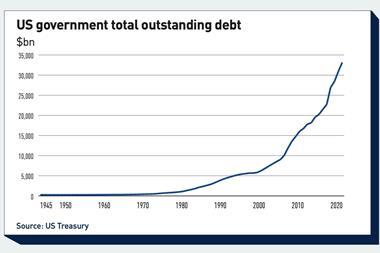According to various surveys, pension funds today want anything that might perform. Until the last quarter it was everything except equities. Now we are recommended to go underweight bonds, but we really want long-term sustainable solutions. Although there is nothing wrong with tactical asset allocation, it is just that most funds have yet to find anyone good at doing it.
Recently we have seen headlines telling us that pension funds are “seeking alternatives to equities”; even more specifically “seeking hedge fund of funds”. On the other hand within a day of the last headline, I read another telling me that “trustees steer clear of hedge funds”. Obviously, it is all a matter of perspective.
As it is estimated that the percentage of UK pension fund assets invested in hedge funds is below 1%, it would be relatively easy for the exposure to double, which would sound good whilst other commentators can still justifiably claim that trustees are steering clear of the sector.
So what about other alternatives. In June, the European Venture Capital Association went on record to say that pension funds have reduced their investment in private equity at the same time as other commentators were saying that the pension funds have now become the largest single investor in the sector. Again these statements are not necessarily inconsistent but it sometimes does make it difficult to know exactly what is going on.
Can we make our way around this alternative asset minefield? We may have around 50% of trustees claiming to be “considering” hedge funds as an investment, but current exposure to the asset class remains very low. According to a recent JPMorganFleming Asset Management survey: “There is a clear desire among pension funds across Europe to tap into investments which are not correlated with equities”. The survey, which apparently polled 341 institutions, found that 70% of respondents were invested in real estate, while 48% were invested in private equity. 22% were invested in hedge funds while 23% were in currency overlay. These figures, of course, do not indicate the percentage exposure of the pension fund, which is much higher for property than other alternatives. Indeed, many funds query whether real estate should be viewed as an alternative at all. Many commentators view real estate as a core asset class.
So what is the attraction of these other asset classes. Diversification, low volatility and low correlation seem to be the key reasons for the attraction of alternatives. In the current market environment alternatives are also seen as having the potential for higher returns and income. So will it be long before we see other alternatives as core asset classes.
An interesting paper has recently been published by the Alternative Investment Research Centre, a relatively new ‘think tank’ set up by Professor Harry Kat at the Cass Business School (part of City of London University). Snappily entitled Working Paper #0017, it asks and answers the question How derivatives can help solve the pension fund crisis.
After first stating the (now) obvious that investing in bonds leaves a pension fund with unrealistically high contribution cost burden and investing in equities reduces the required contribution while introducing a higher level of risk, it concludes with the rather contentious statement that “Properly constructed option strategies can add substantial value to pension fund management.”
The study says that “Overall, incorporating options appears an efficient way of improving long-term pension fund health and there for the sustainability of defined-benefit pension plans.”
However, there is a caveat (or two). “The intuitively most appealing strategies are not necessarily the best strategies;” “Different pension funds require significantly different option strategies. What works well for one fund may be less effective or even counter-productive for another.”
In addition to Kat the paper’s authors are Huub van Capelleveen and Theo Kocken from Rotterdam-based Cardano Risk Management. I think it is an excellent contribution to the asset allocation debate.
The one thing that is quite clear from this paper and many others that have investigated the use of alternatives is the stress on risk management. For once we are not aiming at extra return on its own but return with the right risk characteristics.
Unfortunately, most trustees still have to be convinced that investment in equities is inherently more risky than investment in almost any other asset class. At the moment, all I can ask is that funds diversify their asset base. It is far too dangerous to have too many eggs in any one basket, whether it be an equity or bond basket. Clearly a lot of education is still needed. Perhaps we all need to attend a few more conferences on the subject.












No comments yet